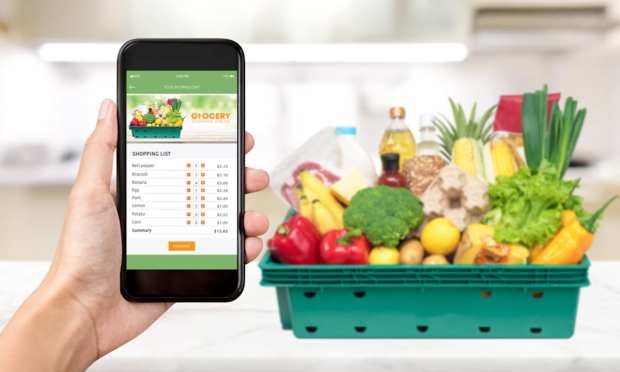Farmstead Brings AI-Enabled Inventory And DoorDash Delivery To Mid-Market Grocers

In the past 14 months, the already crowded online grocery space has become more competitive than ever, with incumbents improving and expanding their digital offerings and newcomers coming to the fore. With digital-native brands and brick-and-mortar giants racing to provide the widest product assortments and the lowest prices, it can be difficult for small and mid-market brick-and-mortar grocers to hold their own. Partnerships with third-party services such as Instacart and Mercato can help these grocers digitize their offerings, but inventory and pricing challenges remain.
E-grocer Farmstead provides a solution with its proprietary Grocery OS software, which offers delivery services and optimizes inventory with artificial intelligence (AI) that is available to other grocers. The company recently added Linda K. Lee to the team as head of business development, in which role she has been working with regional grocers to get a sense of their eCommerce needs. Lee previously led strategic partnerships for Facebook’s Messenger platform, and before that served as head of carrier partnerships for WhatsApp.
“As we all know, [grocery] margins are already super slim for even in-store sales,” Lee told PYMNTS in an interview. “So when it comes to online, a lot of these grocers are trying to figure out the model that works. And so, when we’re having these conversations, I think they appreciate [that] Farmstead, we’re an online grocer ourselves. We’re not just another B2B solutions provider — we’re offering a solution that’s based on all of our learnings.”
Farmstead’s online grocery app is rapidly growing, having recently announced its fifth major market of Austin, Texas, with plans to add at least 10 more throughout the year. At least in Farmstead’s case, Grocery OS’ solutions certainly seem to work.
The DoorDash Boost
In April, Farmstead announced a partnership with DoorDash — which, in addition to bringing the Farmstead app into the DoorDash marketplace and allowing the e-grocer to fulfill its own orders through DoorDash’s delivery infrastructure, also brings Grocery OS users onto its platform.
Lee noted that the announcement of this partnership has generated grocer interest, bringing in “a lot more inbounds … from grocers who are wanting to learn more.” She explained that the logistics and the costs of delivery are “really top of mind for these grocers,” and that this partnership provides an easy way for them to fulfill orders while also drawing more attention to their offerings.
“It’s not just utilizing DoorDash’s last-mile delivery services, but it also enables them to offer their products through the DoorDash marketplace,” Lee said. “…So we’re seeing a huge amount of interest in that.”
Joining The Fragments
Lee views these early months at Farmstead as “very similar” to her early months at Messenger, in that her job at this stage primarily concerns “making sure that we’re meeting the needs of the grocer and understanding [those needs].” One of those is the need for a unified solution. Much like restaurants, many grocers have digitized piecemeal, which can at times lead to a jumbled online presence in which the grocer uses different and potentially incompatible solution providers to meet their various needs.
“If [mid-market grocers] are doing eCommerce already, oftentimes they’re utilizing solutions that are fragmented, so they’re piecing things together,” said Lee, pointing out as an example that grocers may use Instacart for delivery, a different system for inventory control and still another solution provider for receiving and quality control. Grocery OS, on the other hand, offers “the ability to consider an all-in-one solution” that is “built end-to-end” and that is “seamless.”
Additionally, Lee explained, small grocers can benefit from Farmstead’s learnings about its own inventory, taking advantage of the company’s predictive capabilities to determine “how [to] carry a much smaller SKU set and how to maximize that.” This includes purchasing the right amounts of each product and “presenting the right products to the right customers at the right time,” which enables the grocer to buy less and to cut back on waste.
The Role Of The Store In Grocery’s Digital Future
“I think we’re going to see a lot more [grocery delivery],” Lee predicted. “To be honest, I think the volume will continue to go up, and I think the adoption rate will continue to go up. I see retention also staying strong, and also growing.”
However, she expects that consumers will continue to shop from multiple stores each week, noting that Farmstead and its grocery partners are likely “not going to be … a one-stop-shop.” Using herself as an example, Lee said, “I actually like going in the stores and perusing the aisles and seeing what’s available, when I have the time and the bandwidth to do that.”
However, as e-grocery proliferates, Lee believes that the physical store will need to become “well plugged-in and integrated with the customer’s experience online,” which will provide a “more tangible and experiential” way to discover new products. She added, “I think it’s a real opportunity for grocery operators to come up with different ways of presenting new products and making sure the products that are presented to customers in-store are … tied to what they’re also buying online.”
We are already beginning to see some of these future-minded digital/physical integrations at some grocery stores and in some virtual spaces, with new technologies like Amazon’s palm scan payments and Google Pay’s grocery store deal-finding features suggesting a seamless omnichannel journey going forward.
Read More On Online Grocery:
- Thrive Market CTO Says the Future of eGrocery Is Mobile
- Instacart Drives 25% Increase in Loyalty Member Purchases With Rewards
- Getir Acquires Online Grocer FreshDirect to Grow in the US
- Hershey Sees ‘Key Retailer’ Pulling Back Amid Digital Transformation
